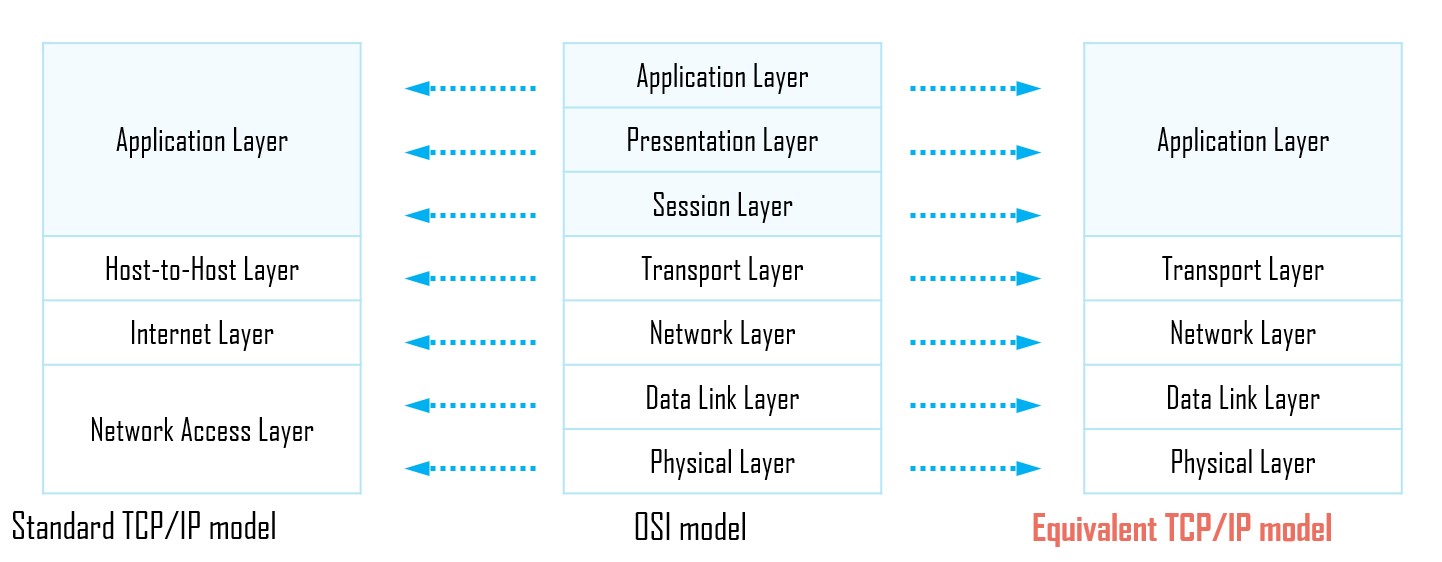OSI NETWORKING REFERENCE MODEL
Welcome to the blog of Networking Reference Model

OSI MODEL
Basics of the OSI Networking Reference Model, July 16, 2021
The OSI Model (Open Systems Interconnection Model) is a conceptual framework used to describe the functions of a networking system. The OSI model characterizes computing functions into a universal set of rules and requirements in order to support interoperability between different products and software.
The OSI reference model was developed by the ISO (International Organisation for Standardisation) and was included in the ISO 7489 standard and released in 1984.
In the OSI reference model, the communications between a computing system are split into seven different abstraction layers:
- Physical Layer - The lowest layer of the OSI Model. It is concerned with electrically or optically transmitting raw unstructured data bits across the network from the physical layer of the sending device to the physical layer of the receiving device.
- Data Link Layer - In this layer, directly connected nodes are used to perform node-to-node data transfer where data is packaged into frames. The data link layer also corrects errors that may have occurred at the physical layer.
- Network Layer - defines logical addresses for routers to determine paths and transmits data from source networks to destination networks.
- Transport Layer - implements connection-oriented and non-connection-oriented data transmission, as well as error checking before retransmission.
- Session Layer - controls the conversations between different computers. A session or connection between machines is set up, managed, and termined at layer 5.
- Presentation Layer - formats or translates data for the application layer based on the syntax or semantics that the application accepts. Because of this, it at times also called the syntax layer. This layer can also handle the encryption and decryption required by the application layer.
- Application Layer - provides network services for applications and the OSI layer closest to end users.

TCP/IP Reference Model
How the TCP/IP model is related to the OSI model, July 16, 2021
The OSI protocol stack is complex, and the TCP and IP protocols are widely used in the industry. Therefore, the TCP/IP reference model becomes the mainstream reference model of the Internet.
The TCP/IP model is similar to the OSI model in structure in that it adopts a hierarchical architecture and adjacent TCP/IP layers are closely related.
In the TCP/IP model, the session, presentation and application OSI layers are combined to form the Application layer.
The standard TCP/IP model combines the data link layer and physical layer in the OSI model into the network access layer. This division mode is contrary to the actual protocol formulation.
The common TCP/IP protocols include:
- Physical Layer - Specifications (eg voltages, speeds, cables, pins and interfaces) are defined here.
- Data Link Layer - Ethernet, PPP(Point-to-Point Protocol), PPPoE(Point-to-Point Protocol over Ethernet).
- Network Layer - IP(Internet Protocol), ICMP(Internet Control Message Protocol), IGMP(Internet Group Management Protocol).
- Transport Layer - TCP(Transport Control Protocol), UDP(User Datagram Protocol).
- Application Layer - HTTP(HyperText Transfer Protocol), Telnet(Teletype Network), FTP(File Transfer Network), SSH(Secure SHell), SMTP(Simple Mail Transfer Protocol), TFTP(Trivial File Transfer Protocol), DNS(Domain Name System), DHCP(Dynamic Host Configuration Protocol), SNMP(Simple Network Management Protocol).




